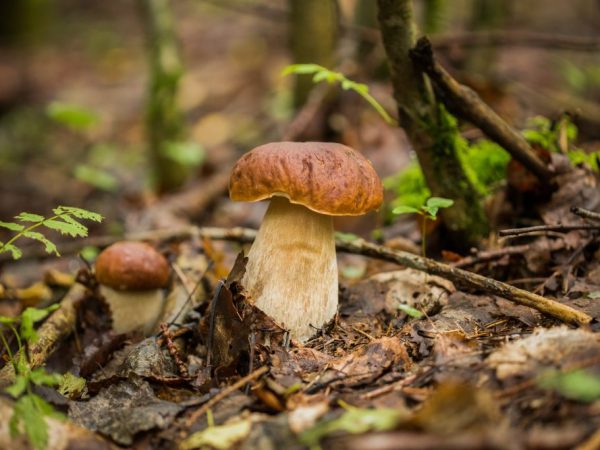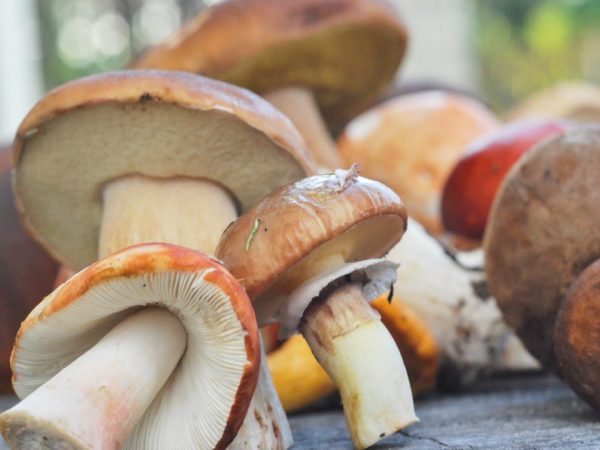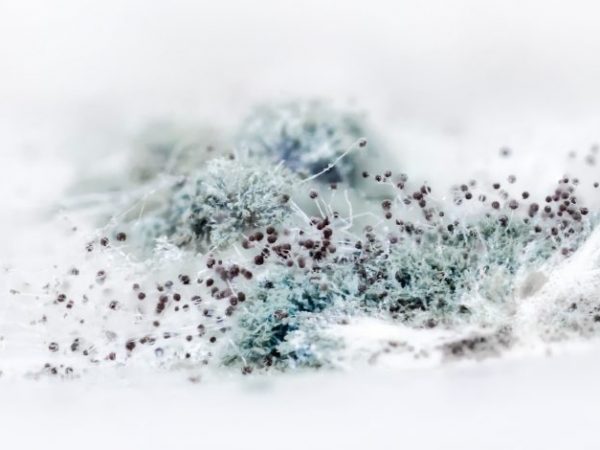The value of mushrooms in nature
Mushrooms are the oldest living organisms. Our ancestors skillfully used their qualities for various purposes. It is impossible to overestimate the importance of mushrooms in nature. The total number of species is about 100,000, and some scientists are inclined to believe that in the near future at least 250,000 species will be described.

The value of mushrooms in nature
general characteristics
The world of mushrooms is large, beautiful and diverse. In nature, the significance of mushrooms is ambiguous. These organisms are multicellular and unicellular, they are eukaryotes with one or more nuclei in the center.
These are unique organisms. Scientists have not yet determined which kingdom they belong to: plants or animals. Therefore, they were allocated to a special kingdom - the Mushrooms.
Similarities between mushrooms and plants
- unlimited growth;
- reproduction by spores;
- the presence of a cell wall;
- the presence of vacuoles in the cell;
- attached lifestyle;
- lack of a cell center;
- nutrition through the absorption process, etc.
Similarities between mushrooms and animals:
- heterotrophic nutrition;
- storage nutrient glycogen;
- the presence of chitin in the cell wall;
- the presence of urea as a metabolic product;
- lack of plastids;
- the presence of lysosomes containing digestive enzymes;
- the presence of small storage vacuoles.
The mycelium of the fungus consists of thin filaments-hyphae, the cells of which have only 1 nucleus and form the fruiting body. It is capable of forming spores for further asexual reproduction. Organisms can reproduce in several ways, including sexually. It does this by fusing the germ cells.
Most organisms are nourished by the absorption of nutrients by parts of the body or the entire surface. Some organisms are saprophytes, symbionts, parasites, or even predators that can digest small midges and worms.
The role of mushrooms in nature
The length of life, the way of feeding and reproduction determine their value. They participate in almost all life processes, entering into symbiosis with plants and animals. The economic value of mushrooms is that they are eaten, they are made into medicines, used in cooking, etc.
The importance of mushrooms in nature is determined by the fact that they affect the following processes:
- on the circulation of substances;
- on the life of plants;
- on the life of animals.
In the biocenosis and biogeocenosis, there is a unity of all living organisms that coexist for a long time in a certain area. There is a positive dynamics of their joint development and growth. In small communities, characteristic transitional states appear. In this case, the classification is heterogeneous and differs in external characteristics.
Mushrooms play a huge role in the ecosystem, because perform certain functions.
Role in the cycle of substances

Mushrooms are involved in many life processes of plants and animals.
The role of fungi in the cycle of substances is that, like bacteria, these organisms contribute to the decomposition of all organic elements that remain after the death of animals and plants.
There is a continuous interaction between producers, consumers and destroyers (producers, consumers, decomposers). Organic matter is created by forest trees, grass and shrubs, animals eat it. When they die, bacteria are required to aid in the decomposition of the remains. The varieties of microscopic fungi help in this. They act as orderlies of the environment, with their help humus is formed, which enriches the soil.
Mycorrhiza is critical and has a positive effect on the growth and development of other plants.
The ecological significance of decomposers in nature lies in the fact that they close the cycle of substances in nature.
Role in plant life
Often fungi form mycorrhiza with plants. Through this process, the tree or bush gets more nutrients and moisture from the soil. Therefore, it is required to understand what is the significance of mushrooms in the life of nature. As a rule, the formation of fruiting bodies occurs near the organisms with which the fungi are associated precisely by mycorrhiza.
Role in animal life
In nature, mushrooms are important for animals, because provide their food. Representatives of a number of species stored for the winter and rare winter species are useful for rodents and birds when the weather is snowy and frosty. Elks, roe deer and wild boars enjoy these organisms with pleasure in winter and summer, taking them out from under fallen leaves and branches.
The role of mushrooms in human life
Mushrooms play a huge role in human life. They are used in the following areas:
- in the food industry;
- in the microbiological industry;
- in the economic sphere.
In the food industry
Mushrooms are of great importance in the food industry. Many species are used for conservation, for preparing various dishes; they are successfully dried and frozen. Some species have learned to grow in artificial conditions. There are many mushroom farms to harvest oyster mushrooms, champignons and whites.
The importance of mushrooms in the diet of the inhabitants of France is great. Black truffle is especially appreciated there. And in Japan, they prefer shiitake, which in our country is often seen already dried.
In mushrooms, nutrients, minerals and vitamins are of great importance for humans. Some properties are used in winemaking and bakery, in industry and everyday life.
Irina Selyutina (Biologist):
All so-called. "Culture yeast" is divided into the following groups:
- Top-fermented yeast: begin to work only at a temperature of + 18 ... + 25 ° C and at the end of fermentation float to the surface, forming a kind of foamy cap. Their ability to rise to the surface is due to the fact that even after budding, the cells remain connected to each other, forming a kind of colony and CO bubbles2 pick them up.
- Bottom-fermented yeast: the fermentation temperature is + 8 ... + 12 ° С and at the end of the process they settle to the bottom of the container, forming a dense sediment there.
In addition to the temperature and location at the end of fermentation, these groups of yeast also differ in the content of specific enzymes - melibiose and raffinose.
Yeast is a single-celled mushroom that housewives constantly use when baking. The role of unicellular fungi, their economic importance can hardly be overestimated. By emitting carbon dioxide, they raise the dough and make the baked goods tasty and tender.
Their role is also great in winemaking, in the production of mold or blue cheeses. So, cheeses with "noble mold" - Camembert and Roquefort are popular. They are obtained by introducing them into the curd mass before the maturation of mold spores (special types of penicillus fungus), when using special long needles (or something else), air channels are formed inside the future cheese heads. It is this procedure that enables the normal development of blue mold.
In medicine and microbiological industry

Molds are used in medicine
These organisms have long been used in the production of medicines and pharmaceuticals. The first antibiotic, penicillin, was obtained from the mold of penicillus. The value of mushrooms in medicine has been proven by practice. They are used to produce proteins, antibiotics, and organic acids. Extracts are used to make medicines to improve bowel function, stabilize blood pressure and regulate blood sugar. In healthcare, some drugs made from biologically active substances contained in these organisms are prescribed to patients to recover from chemotherapy.
Some species are designed to obtain drugs needed in pest control in agriculture to improve the growth of crops.
Irina Selyutina (Biologist):
Mushrooms are used as a biological method for controlling agricultural pests, for example, beet weevil and scale insects. From mushrooms, preparations are made that are widely used to destroy insect pests (for example, trichodermine, which includes spores, mycelium and metabolic products of the fungus Trichoderma, which is an antagonist of many pathogenic fungi, one way or another associated in its life cycle with the soil).
Such preparations are being developed both for open ground and for protected.
In folk medicine
Traditional healers have long noticed the miraculous properties of some mushrooms. White is often used in the treatment of frostbite and the healing of festering wounds or cuts.
A birch sponge is good for pulmonary diseases.
Of the representatives of the types of cap mushrooms in folk medicine, they often use a raincoat, fly agaric, bilious and volushka. They are good for gout, gallbladder or urinary tract problems.
Mushroom damage
These organisms are capable of causing significant harm both to animals and plants, and to humans. Pests have many names. The general category is obligate parasites.
Some of the fungi are the causative agents of human fungal diseases. So, the trichophyton fungus, which affects hair, nails and skin, is the causative agent of the ringworm. The yeast-like fungi Pitorosporum causes the development of seborrhea. The yeast fungus sidium in the oral cavity, in case of imbalance in the body, causes the development of thrush.
Fungi-parasites of agricultural plants are widely known, leading to enormous losses in crop yield. They are dealt with by special institutions and even international organizations.
Often there are parasitic growths on the trees in the form of a semicircle. These are tinder fungi. The species of such organisms have a different structure. They appear as a result of the formation of mycelium at the point of penetration of the spores of the parasitic organism, which grows and develops at the expense of the tree, feeds on its cells.
Such parasitic fungi as a result make the plant fragile, weaken it and lead to slow death. They reproduce well in the bark of a tree, releasing a lot of spores into "free flight", which migrate to neighboring trees. Fertile places for their settlement are fresh wounds and chills. To prevent this from happening, it is required to regularly destroy tinder fungi in the garden. Of course, you cannot remove all of them, but controlling the development of parasites is also important to maintain, as well as treating injuries on the trunks of fruit trees.
Conclusion
The role of fungi in the life of living organisms is no less significant than the role of sunlight. They are used in medicine and cooking, agriculture, and mold cheeses are made from them. Traditional medicine is not complete without them. There is even officially recognized fungotherapy in Asian countries. But these organisms sometimes negatively affect living beings, can harm and in some cases lead to death.



